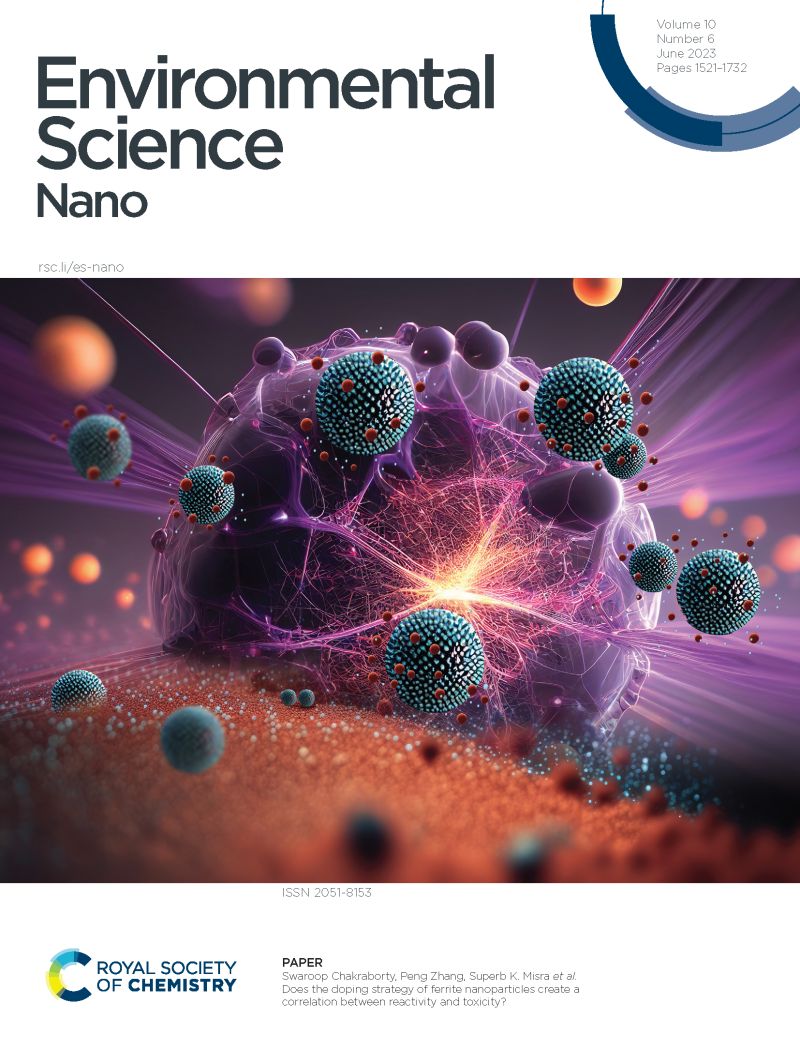Interfacial charge transfer at black carbon-mineral dust hybrids boosts atmospheric photooxidation
IF 5.1
2区 环境科学与生态学
Q1 CHEMISTRY, MULTIDISCIPLINARY
引用次数: 0
Abstract
Synergistic interactions in multicomponent aerosols remain poorly quantified in atmospheric models. Here, we reveal how nanoscale interfaces in black carbon (BC)-mineral dust (e.g., TiO2) hybrid aerosols drive humidity-resilient photochemistry that amplifies VOCs oxidation. Through integrated flow reactor kinetics and spectroscopy, we demonstrate that BC’s π-conjugated structure enhances interfacial charge separation, tripling •OH generation versus pristine TiO2. Crucially, BC’s hydrophobic nano-domains shield active sites from water passivation, sustaining 53% catalytic activity at 50% RH, which is 2.5 times higher than TiO2 alone. These hybrids redirect oxidation pathways toward volatile aldehydes (>85% yield) while suppressing acidic byproducts, thereby altering secondary organic aerosol precursor dynamics. Our work quantifies the nanoscale synergies in charge transfer, humidity resilience, and product selectivity, challenging models that treat aerosols as isolated components. These insights advance predictive accuracy for air quality and climate feedbacks in dust-impacted regions by highlighting interface-engineered photochemistry.黑碳矿物粉尘杂合体的界面电荷转移促进大气光氧化
在大气模式中,对多组分气溶胶的协同相互作用的量化仍然很差。在这里,我们揭示了黑碳(BC)-矿物粉尘(例如TiO2)混合气溶胶中的纳米级界面如何驱动湿度弹性光化学,从而放大VOCs氧化。通过综合流动反应器动力学和光谱学,我们证明了BC的π共轭结构增强了界面电荷分离,与原始TiO2相比,•OH生成增加了三倍。重要的是,BC的疏水纳米结构域保护活性位点免受水钝化,在50% RH下保持53%的催化活性,比单独使用TiO2高2.5倍。这些杂化物将氧化途径转向挥发性醛(产率85%),同时抑制酸性副产物,从而改变二次有机气溶胶前体动力学。我们的工作量化了电荷转移、湿度弹性和产品选择性方面的纳米级协同作用,挑战了将气溶胶视为孤立成分的模型。这些见解通过强调界面工程光化学,提高了沙尘影响地区空气质量和气候反馈的预测准确性。
本文章由计算机程序翻译,如有差异,请以英文原文为准。
求助全文
约1分钟内获得全文
求助全文
来源期刊

Environmental Science: Nano
CHEMISTRY, MULTIDISCIPLINARY-ENVIRONMENTAL SCIENCES
CiteScore
12.20
自引率
5.50%
发文量
290
审稿时长
2.1 months
期刊介绍:
Environmental Science: Nano serves as a comprehensive and high-impact peer-reviewed source of information on the design and demonstration of engineered nanomaterials for environment-based applications. It also covers the interactions between engineered, natural, and incidental nanomaterials with biological and environmental systems. This scope includes, but is not limited to, the following topic areas:
Novel nanomaterial-based applications for water, air, soil, food, and energy sustainability
Nanomaterial interactions with biological systems and nanotoxicology
Environmental fate, reactivity, and transformations of nanoscale materials
Nanoscale processes in the environment
Sustainable nanotechnology including rational nanomaterial design, life cycle assessment, risk/benefit analysis
 求助内容:
求助内容: 应助结果提醒方式:
应助结果提醒方式:


